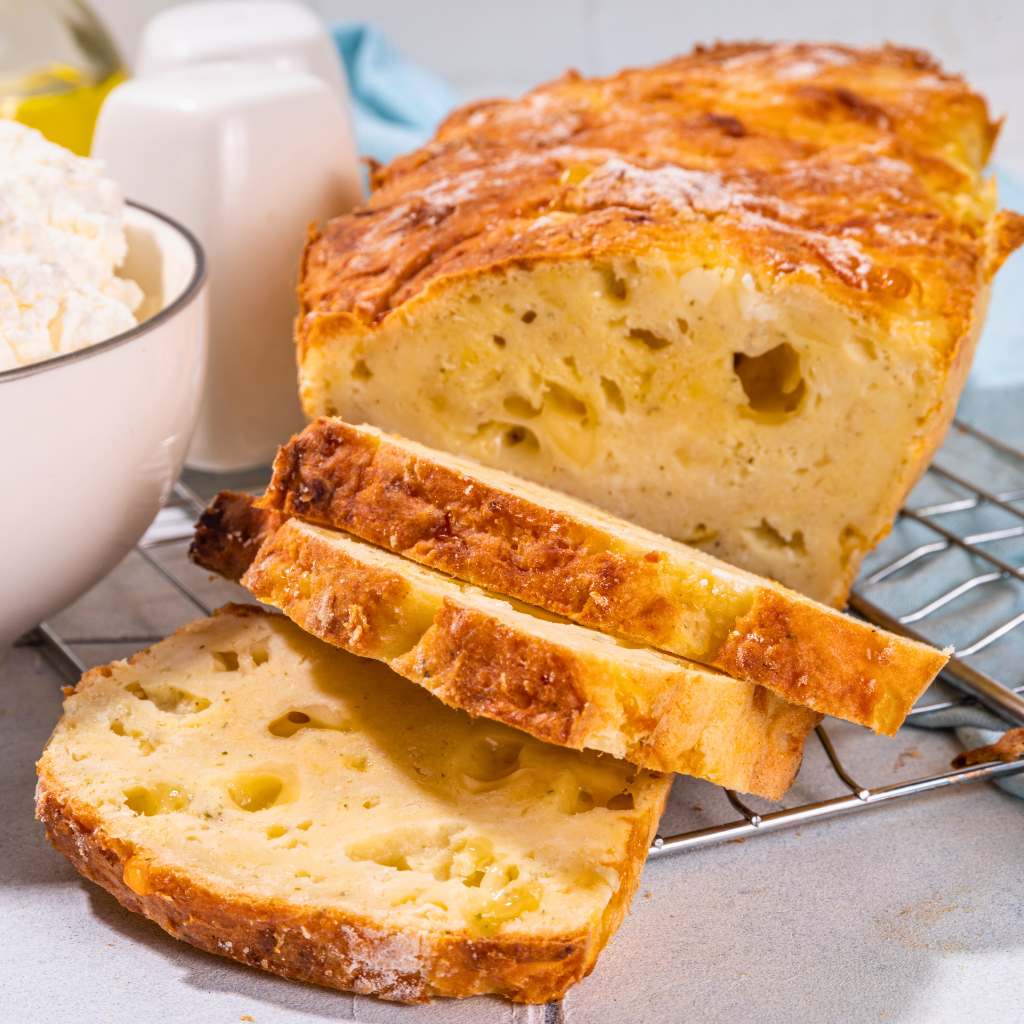Cottage cheese bread is a delightful and nutritious option for homemade bread lovers. This recipe offers a unique twist, blending the creamy texture of cottage cheese with traditional bread ingredients. It results in a soft, moist loaf with a slightly tangy flavor.
Perfect for breakfast, sandwiches, or as a side for soups and salads, this bread is versatile and easy to make.
Table of Contents
Ingredients Needed For Cottage Cheese Bread
Cottage cheese bread is a tasty treat that combines the creamy goodness of cottage cheese with the soft texture of freshly baked bread. To get started, you’ll need to gather the right ingredients.
Essential Components
To make cottage cheese bread, you need a few key ingredients. These components ensure your bread has the perfect texture and flavor. Here’s a list of the essential components:
- Flour: All-purpose flour works best for this recipe. It gives the bread a soft and airy texture.
- Cottage Cheese: The star ingredient. Use full-fat cottage cheese for a richer taste. Make sure it’s well-drained.
- Yeast: Active dry yeast helps the bread rise and gives it a fluffy texture.
- Milk: Adds moisture and makes the bread tender. Use whole milk for best results.
- Sugar: A small amount of sugar feeds the yeast and adds a touch of sweetness.
- Salt: Enhances the flavor and balances the sweetness.
- Butter: Adds richness and helps create a soft crumb. Use unsalted butter.
- Eggs: Contribute to the structure and color of the bread. They also add a bit of richness.
| Ingredient | Quantity |
|---|---|
| All-purpose flour | 3 cups |
| Cottage cheese | 1 cup |
| Active dry yeast | 2 1/4 tsp |
| Whole milk | 1/2 cup |
| Sugar | 2 tbsp |
| Salt | 1 tsp |
| Unsalted butter | 1/4 cup |
| Eggs | 2 large |
Optional Add-ins
While the essential components create a delicious bread, you can add some extra ingredients to make it even more special. These optional add-ins can enhance the flavor and texture of your cottage cheese bread:
- Herbs: Fresh or dried herbs like rosemary, thyme, or dill can add a burst of flavor.
- Garlic: Minced garlic or garlic powder can create a savory twist.
- Cheese: Shredded cheddar, parmesan, or mozzarella can make the bread cheesy and gooey.
- Nuts: Chopped nuts like walnuts or pecans add a crunchy texture.
- Seeds: Sunflower seeds, sesame seeds, or flaxseeds can provide a nutty flavor and extra nutrients.
- Onions: Finely chopped onions or green onions can add a sweet and savory taste.
- Spices: A pinch of spices like paprika, cumin, or black pepper can give a unique kick.
Experimenting with these add-ins can make your cottage cheese bread unique. Mix and match to find your favorite combination. Happy baking!

Preparation Steps
By following these easy steps, you’ll be able to enjoy a fresh, warm, and flavorful bread in no time.
Mixing The Dough
First, gather all your ingredients. You will need:
- 2 cups of all-purpose flour
- 1 cup of cottage cheese
- 1/4 cup of warm water
- 2 tablespoons of sugar
- 1 tablespoon of active dry yeast
- 1 teaspoon of salt
- 1 tablespoon of olive oil
Start by activating the yeast. Mix the warm water, sugar, and yeast in a small bowl. Let it sit for 5-10 minutes until it becomes frothy.
In a large mixing bowl, combine the flour, salt, and cottage cheese. Make a well in the center and pour in the yeast mixture and olive oil. Stir the ingredients together with a wooden spoon or use a stand mixer with a dough hook attachment.
The dough should start to come together and form a sticky ball. If it’s too dry, add a tablespoon of water at a time. If it’s too wet, add a bit more flour. Aim for a soft and slightly sticky dough.
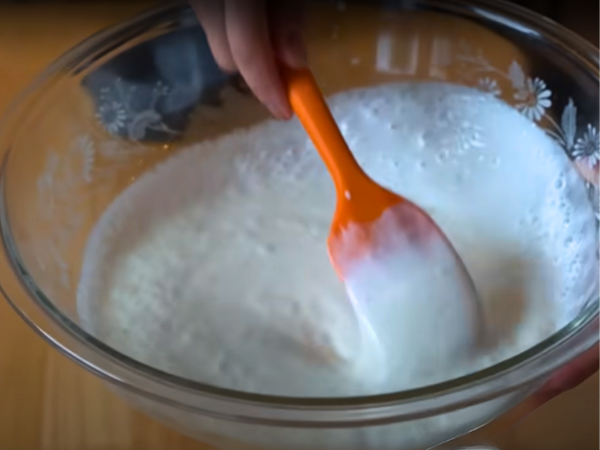
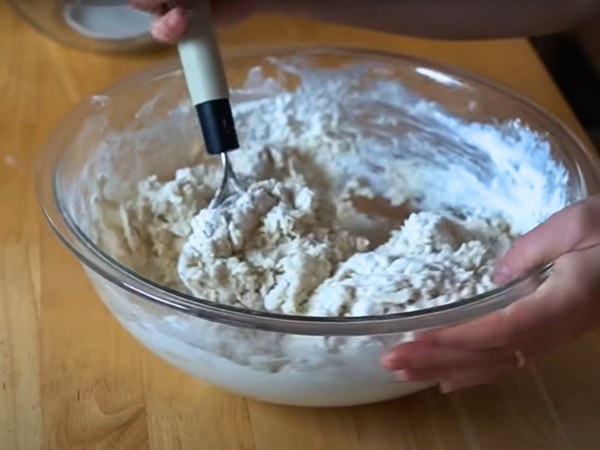
Kneading Techniques
Once the dough is mixed, it’s time to knead it. Kneading helps develop the gluten, which gives the bread its structure. Follow these steps for effective kneading:
- Lightly flour your work surface and hands to prevent sticking.
- Turn the dough out onto the floured surface.
- Using the heel of your hand, push the dough away from you.
- Fold the dough back over itself and give it a quarter turn.
- Repeat this process for about 10 minutes until the dough is smooth and elastic.
If you have a stand mixer with a dough hook, you can knead the dough on medium speed for about 5-7 minutes. The dough should pull away from the sides of the bowl and form a ball.
To test if the dough is ready, poke it gently with your finger. If it springs back, it’s ready to rise. If not, knead for another minute or two.
After kneading, place the dough in a lightly oiled bowl, cover it with a damp cloth, and let it rise in a warm place for about an hour or until it has doubled in size.
By following these preparation steps, you set the foundation for a perfect Cottage Cheese Bread. Happy baking!

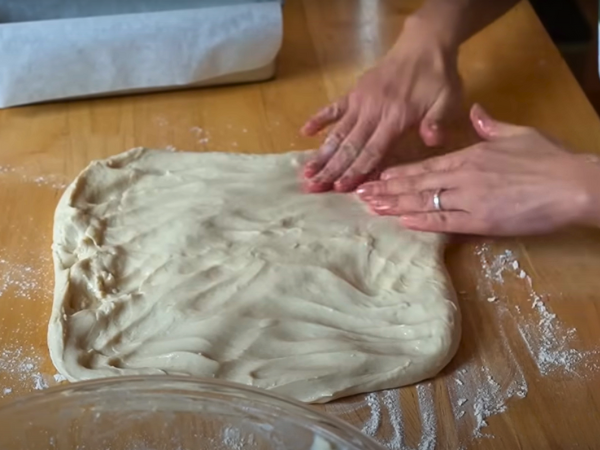
Baking Instructions
This guide will walk you through the simple baking instructions to achieve the best results.
Preheating The Oven
Before starting, make sure to preheat your oven to ensure the bread bakes evenly. Set your oven to 350°F (175°C). Preheating the oven takes about 15 minutes, so it’s best to start this process before you prepare your dough.
While waiting for the oven to preheat, you can prepare your baking tools:
- Grease a 9×5 inch loaf pan with butter or non-stick spray.
- Ensure your baking rack is in the center of the oven for even heat distribution.
- Gather any additional toppings or ingredients you’ll need, such as sesame seeds or poppy seeds.
Preheating the oven is essential because it allows the yeast in the dough to rise properly. If the oven is not hot enough, the bread may turn out dense and undercooked. Use an oven thermometer to check the temperature if your oven does not have a digital display.

Baking Time And Temperature
Once your oven is preheated to the right temperature, place the loaf pan in the center rack. Bake the bread at 350°F (175°C) for about 45 to 50 minutes. This ensures the bread cooks thoroughly without burning the crust.
To check if the bread is done, use the following tips:
- Insert a toothpick or a skewer into the center of the loaf. If it comes out clean, the bread is ready.
- Tap the top of the loaf gently. A hollow sound indicates that the bread is fully baked.
- Check the internal temperature with a kitchen thermometer. The bread should reach at least 190°F (88°C).
After baking, remove the loaf from the oven and let it cool in the pan for about 10 minutes. Then, transfer it to a wire rack to cool completely. This prevents the bread from becoming soggy on the bottom.
Enjoy your freshly baked cottage cheese bread warm or store it in an airtight container for later. Happy baking!
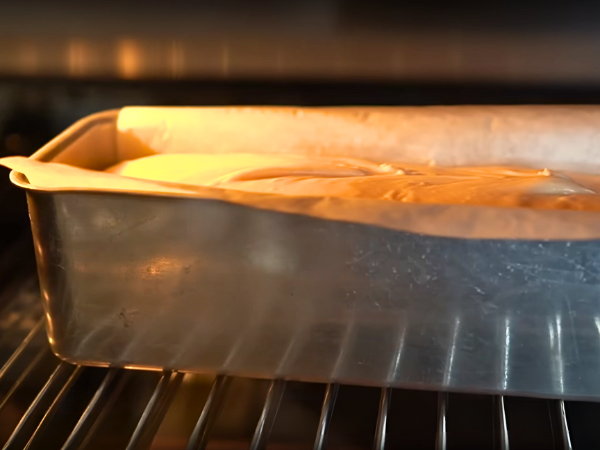

Flavor Variations
The basic recipe is delicious on its own, but by adding different flavors, you can create a whole new taste experience. Whether you love savory or sweet, there’s a flavor variation for you!
Herbs And Spices
Adding herbs and spices to your cottage cheese bread can elevate its flavor profile. Fresh or dried herbs can bring out the natural flavors of the ingredients, making your bread even more irresistible. Here are some popular herbs and spices you can use:
- Rosemary: Adds a piney, woodsy flavor.
- Thyme: Offers a subtle, earthy taste.
- Dill: Delivers a fresh, slightly tangy flavor.
- Garlic Powder: Gives a warm, savory punch.
- Paprika: Adds a mild, peppery flavor.
Mix these herbs and spices into the dough before baking. Here is a simple table to guide you on the quantity to use:
| Herb/Spice | Quantity (per loaf) |
|---|---|
| Rosemary | 1 tbsp (fresh) / 1 tsp (dried) |
| Thyme | 1 tbsp (fresh) / 1 tsp (dried) |
| Dill | 1 tbsp (fresh) / 1 tsp (dried) |
| Garlic Powder | 1 tsp |
| Paprika | 1 tsp |
Experiment with different combinations to find your favorite blend. Try mixing rosemary and garlic powder for a savory twist, or dill and paprika for a unique taste.

Sweet Additions
If you prefer your bread on the sweeter side, there are many sweet additions you can incorporate into your cottage cheese bread. These ingredients will add a delightful sweetness and make your bread perfect for breakfast or as a snack. Here are some ideas:
- Honey: Adds a natural sweetness and moisture.
- Cinnamon: Provides a warm, sweet-spicy flavor.
- Raisins: Add a chewy texture and bursts of sweetness.
- Chopped Nuts: Offer a crunchy contrast and mild sweetness.
- Vanilla Extract: Enhances the overall sweetness and flavor.
To incorporate these sweet additions, mix them into the dough before baking. Here’s a guideline on how much to use:
| Sweet Addition | Quantity (per loaf) |
|---|---|
| Honey | 2-3 tbsp |
| Cinnamon | 1-2 tsp |
| Raisins | 1/2 cup |
| Chopped Nuts | 1/2 cup |
| Vanilla Extract | 1 tsp |
Combine honey and cinnamon for a classic sweet bread, or try raisins and chopped nuts for a hearty, sweet loaf. The possibilities are endless!
Common Mistakes
Here are some common mistakes that can affect your Cottage Cheese Bread.
Overmixing Dough
Overmixing the dough is a frequent mistake. It can lead to dense and tough bread. When making Cottage Cheese Bread, you should mix the dough until the ingredients are just combined. Here’s why:
- Gluten Development: Overmixing develops too much gluten. This makes the bread chewy and dense.
- Texture Issues: The bread loses its tender texture. Instead of being fluffy, it turns out hard.
To avoid overmixing:
- Use a light hand. Mix slowly and gently.
- Stop mixing as soon as you see the ingredients combined.
- Consider using a spoon or spatula instead of a mixer.
Look at the difference between properly mixed and overmixed dough in the table below:
| Properly Mixed Dough | Overmixed Dough |
|---|---|
| Light and fluffy texture | Dense and chewy texture |
| Rises well | Struggles to rise |
| Even crumb structure | Uneven crumb structure |
Incorrect Baking Times
Incorrect baking times can ruin your Cottage Cheese Bread. Baking for too long or too short affects both the texture and flavor. Here’s what can go wrong:
- Underbaked Bread: If the bread is underbaked, it will be doughy and wet inside.
- Overbaked Bread: If the bread is overbaked, it will be dry and hard.
To get the baking time right:
- Preheat the oven: Ensure your oven is at the correct temperature before baking.
- Use a timer: Set a timer as soon as the bread goes in the oven.
- Check doneness: Use a toothpick or skewer. Insert it into the bread. If it comes out clean, the bread is done.
Here’s a quick reference table for baking times:
| Bread Size | Baking Time | Temperature |
|---|---|---|
| Small Loaf (1 lb) | 25-30 minutes | 350°F (175°C) |
| Medium Loaf (1.5 lbs) | 35-40 minutes | 350°F (175°C) |
| Large Loaf (2 lbs) | 45-50 minutes | 350°F (175°C) |
By avoiding these common mistakes, your Cottage Cheese Bread will turn out perfect every time.
Nutritional Information Cottage Cheese Bread
Understanding the nutritional information of cottage cheese bread helps you make informed dietary choices. Let’s dive into the nutritional details of this delicious bread.
Approximate Calorie
The calorie count in cottage cheese bread can vary based on the ingredients and portion size. On average, a slice of cottage cheese bread contains:
- Calories: Approximately 120-150 calories per slice
These calories come from the combination of flour, cottage cheese, and other ingredients used in the recipe. Here’s a general breakdown of the calorie content in common ingredients:
| Ingredient | Calories per Serving |
|---|---|
| All-purpose flour (1 cup) | 455 calories |
| Cottage cheese (1 cup) | 206 calories |
| Sugar (1 tbsp) | 49 calories |
| Egg (1 large) | 72 calories |
By adjusting the serving size and ingredients, you can control the calorie intake of your cottage cheese bread. A slice or two is often enough to enjoy its flavor and nutritional benefits without overindulging.
Nutritional Breakdown
Cottage cheese bread is rich in various nutrients. A typical slice offers:
- Protein: 6-8 grams
- Carbohydrates: 20-25 grams
- Fat: 3-5 grams
- Fiber: 1-2 grams
- Sugar: 2-4 grams
This bread also provides essential vitamins and minerals, such as:
- Calcium: Supports bone health
- Vitamin B12: Important for nerve function
- Phosphorus: Helps in energy production
- Riboflavin: Aids in energy metabolism
- Sodium: Regulates fluid balance
The nutritional content can vary based on the specific recipe and ingredients used. Adding whole grains or seeds can boost the fiber and mineral content further, making it even healthier.
Health Advantages
Cottage cheese bread offers several health benefits:
- High Protein Content: Promotes muscle repair and growth.
- Rich in Calcium: Strengthens bones and teeth.
- Low in Sugar: Makes it a healthier option for those watching their sugar intake.
- Good Source of Fiber: Aids digestion and promotes a healthy gut.
Additionally, cottage cheese contains probiotics which support gut health. The bread’s high protein content helps keep you full longer, making it a great option for weight management. It’s also versatile, pairing well with both sweet and savory toppings. This makes it an ideal choice for any meal of the day.
